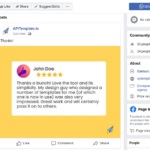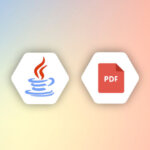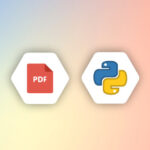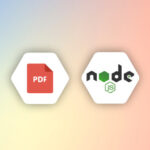There has been a lot of buzz these past few years in the tech landscape surrounding the emergence of no-code tools. Everyone seems to be talking about how these no-code tools are leveling up the field. Many have tested out popular no-code tools like Webflow, Bubble, and Zapier, amongst others, and have varying experiences and opinions about them. If you haven’t heard about no-code tools before or maybe you have but haven’t paid attention, then this article is for you.

No code makes it possible for people to build their websites, applications, or customized templates without needing to have any coding knowledge or hire a bunch of developers to get the work done. These tools are changing the game and reshaping software development in such a way that it eliminates the time taken to bring a product idea to life and create applications without the need for traditional coding.
No-code tools provide built-in components and captivating visual interfaces that allow users to design, develop, and deploy software solutions through a more accessible process. Although there might be a narrative surrounding using no-code tools because they are easy to use, this is a very wrong way to start even though these tools have their trade-offs.
In this article, I will be delving into understanding no-code tools and their use. We would also go into an in-depth description of exploring popular no-code tools, their advantages, the differences between no-code and low-code tools, as well as how you can tailor these tools for business solutions.
Understanding No-code and Low-code tools
As we explained earlier in the introduction section, No-code tools are tools that help you create and deploy applications with no coding required at all. But what if you don’t want a tool that doesn’t require coding at all, maybe you aren’t a programming novice but not an expert either and prefer a blend in the mix, something that requires minimal coding for the development of software applications, this is where low code tools come in.
Low-code tools help facilitate the development of software applications with minimal coding. They provide a drag-and-drop interface with built-in components that help users create software applications faster without needing to resort to the traditional method of coding. An example of a low-code tool is n8n. n8n is a low-code platform suitable for people with a technical background who are looking to create complex workflows in a small timeframe. You can add more advanced functionalities by writing simple code snippets. Now, let’s take a closer look at the differences between no-code tools and low-code tools.
No-code vs Low-code
No-code and Low-code tools are both simplified approaches to the creation of software applications. However, there are distinct differences between the two. Some of these are:
- Coding level: When it comes to no-code tools, no coding knowledge whatsoever is required to get started or use these tools. Users may create different applications using the drag-and-drop components available. However, with low-code tools, users may need to write simple code snippets for more advanced functionality, hence the minimal coding required.
- Speed of development: One of the advantages of using no-code tools is how rapid application development is prioritized, here, users can create applications quickly without any coding. However, they might come with a few trade-offs in terms of flexibility. Low-code platforms also prioritize speed, but they offer more flexibility and room for customization. Applications might take slightly longer to build compared to no-code, but they can handle more complex scenarios.
- Complexity level: No-code tools are generally simpler and suitable for creating straightforward applications, such as basic websites, simple forms, and lightweight workflows. Whereas, low-code tools accommodate a wider range of application complexity, including moderately complex business processes, data integrations, and more advanced workflows.
- Targeted users: No-code tools are designed for individuals with no technical skills, such as business analysts or marketers who want to create simple applications without writing any code. However, low-code tools target individuals with a bit more technical proficiency, such as developers with limited coding experience, who can leverage both visual tools and coding capabilities.
- Customized functionality: No-code tools may sometimes offer limited customization beyond the provided templates and components. Users might be restricted in their ability to create highly tailored functionalities. Low-code tools provide more customization options, allowing users to write code snippets for specific functionalities and tailor applications to meet unique business requirements.
No-code tools offer several benefits to non-technical users such as cost efficiency, reduced learning curve, faster development, increased productivity, and many more, allowing them to create web applications without needing to write code the traditional way . This allows non-technical users to bring their ideas to life in a short period, and contribute to problem-solving.
Advantages of No-code tools
No-code tools help foster a more intuitive approach to building software applications. It makes it easy for changes to be made to the software application without having to worry about the application crashing due to frequent changes, hence, making software maintenance a breeze. Here are some key advantages of using no-code tools:
i. User-friendly
No-code tools are designed with ease of use in mind. You don’t need any programming experience to create a functioning application. Instead, you can use a simple drag-and-drop interface to build your app visually. It also allows users to take advantage of built-in components, and pre-designed templates, which not only makes the application development accessible and faster to individuals with varying technical levels or backgrounds but also gives you the control to make changes to your designs easily by taking advantage of the drag and drop components readily available for use.
This makes it easy for anyone to create powerful software solutions without having to invest time and money in learning how to code. With no code tools, you can focus on your business logic and let the platform take care of the technical details. This results in faster development times, fewer bugs, and a more streamlined workflow.
No-code tools like APITemplate have a WYSIWYG (What You See Is What You Get) editor that is easy to use and allows for these changes. The editor is easy to use and highly recommended for beginners. To learn more about this tool, check out this article on how to get started with the WYSIWYG editor.
ii. Rapid Application Development (RAD)
Rapid Application Development (RAD) is a type of software development approach that focuses on building simple versions of the program quickly without spending too much time on planning. The visual nature of no-code tools makes it easier to make modifications and enhancements on the fly.
No-code tools significantly reduce the cost of development by eliminating the need for extensive coding expertise. It enables users to create applications much faster rather than resorting to the traditional method of coding. This speed is especially beneficial for quickly prototyping ideas, responding to changing business needs, contributing to solutions, or launching projects on tight timelines.
iii. Process/Workflow automation
Workflow automation involves creating a series of automated tasks and actions without having to do them manually. No-code workflow automation tools allow non-technical users to design and implement automated processes. This streamlines various business workflows, such as email responses, social media posts, lead generation, and so much more without requiring coding expertise.
Using no-code workflows to automate tasks that are done over and over again helps save time and lowers the chances of mistakes. This means that employees can spend more time on important tasks that bring more value, making the overall work output better. No-code tools also make it possible to create and start workflows quickly. This is really useful, especially when businesses face a sudden increase in demand or a quick change in the market. It helps companies adapt quickly to these situations. If you are interested in workflow automation, here is a simple tutorial on how to automate image generation API with Zapier and Google Sheets.
vi. Cost Savings
When looking to hire or outsource developers to bring your product ideas to life, one of the first things you consider is cost. Hiring can be expensive. With no-code tools, organizations can save costs by enabling existing employees to create applications without the need for additional technical resources.
Cost savings refers to the financial benefits that businesses can gain by utilizing no-code platforms for various tasks and processes. Cost savings through no-code tools offer businesses the opportunity to achieve operational efficiency and streamline processes while reducing expenses associated with software development, maintenance, and training.
These tools empower non-technical users to build applications, automation, and workflows, removing the necessity for specialized developers and the subsequent costs. Additionally, traditional coding may introduce mistakes that require debugging and revisions, which can lead to higher expenses. No-code platforms frequently include mechanisms for validation and error-checking, lessening the need for extensive debugging efforts.
v. Reduced Learning Curve
Learning how to use no-code tools typically requires less time and effort compared to learning coding languages and frameworks. This minimizes the barrier to entry for non-technical users. The advantage of a reduced learning curve in using no-code tools is that individuals can quickly understand and use these tools without needing extensive training.
This drastically reduces the time and resources needed for employees to become proficient and empowers more people within the organization to contribute to technology-driven projects. Additionally, when employees can use no-code tools effectively, they can handle routine tasks without relying on the IT department. This frees up IT resources for more complex projects.
Exploring Popular No-code Tools
There are several popular no-code tools available to cater to your software applications. Each of these tools has distinct uses and can sometimes be combined for automation purposes. Here are a few well-known tools:
i. APITemplate.io
APITemplate is a no-code tool that simplifies the generation of images and PDFs using REST APIs. It provides pre-defined templates and data for creating new images and PDFs. One of the most compelling aspects of using APITemplate lies in its integration with third-party no-code tools like Zapier and Bubble. This allows for seamless integration, hence, perfecting automation workflows.

To illustrate APITemplate’s practical application, consider the scenario of creating images and PDF documents. With ready-to-use templates available, the need to manually create documents from scratch becomes obsolete. Using this no-code tool, you can easily tweak the image/PDF to meet your company’s needs.
Once the customization is complete, the generated document – whether it’s an invoice or certificate – can be seamlessly produced using an external tool like a configured Bubble app. Each image or PDF creation can be dynamically triggered, automatically producing the corresponding document within the Bubble app. For a step-by-step guide on leveraging APITemplate with Bubble to create images and PDFs, refer to our comprehensive tutorial.
ii. Zapier
Zapier is a popular no-code automation tool that allows users to connect various apps and automate workflows without any coding. The name “Zapier” comes from the idea of creating “Zaps,” which are automated actions triggered by specific events in one app that correspond to actions being performed or executed in another application.

A trigger serves as an event that sets off automation, like when you get a new email, a fresh entry is added to a spreadsheet, or someone submits a form. An action is a subsequent task that Zapier performs in response to the trigger, like creating a new task in a to-do list app, sending a message in a messaging app, or adding a new contact to a CRM. It can also be used for a wide range of automation tasks, such as sending notifications, updating databases, syncing data between apps, creating records, posting on social media, generating reports, and more.
Zapier is particularly valuable in no-code environments because it lets users create sophisticated automated workflows without writing any code. This helps individuals and businesses to automate repetitive tasks, enhance productivity, and seamlessly integrate their favorite apps without requiring technical expertise in programming.
iii. Webflow
Webflow is a powerful no-code platform that helps users design, build, and launch custom websites without needing to write traditional code. It’s a versatile tool that combines visual design with dynamic interactions to create web layouts by dragging and dropping elements onto a canvas. This makes it easy to design websites visually, just like working with design tools such as Adobe XD or Sketch.

Webflow offers a content management system (CMS) that enables users to manage and update website content easily. This is especially useful for websites with dynamic content like blogs, portfolios, and news sections. It also offers e-commerce capabilities that allow users to build online stores without code. Users can add products, set up shopping carts, manage orders, and customize the entire shopping experience.
One thing I love about Webflow is its hosting services which it provides. This allows users to publish their websites directly from the platform eliminating the need and stress of seeking external hosting solutions. It also supports collaborative workflows, allowing teams to work together on projects. Designers, content creators, and developers can all contribute seamlessly.
vi. Bubble.io
Bubble is a robust no-code platform enabling users to design, develop, and deploy web applications without traditional coding skills. It’s designed to provide a visual interface for creating complex and interactive web applications. It offers a drag-and-drop interface that allows you to place elements on the screen and set up workflows as well as visual interactions.
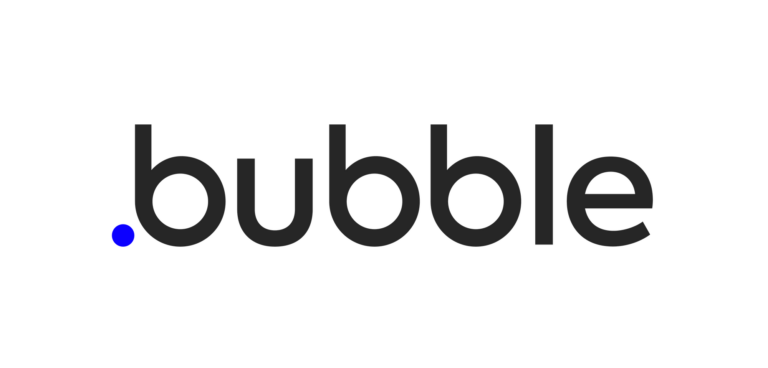
Bubble also helps users create databases directly within the Bubble app making it easy to store and manage data for the applications. This is particularly useful for e-commerce applications.
Bubble supports collaboration by allowing multiple team members to work on the same project simultaneously. This is particularly beneficial for teams working on complex applications. While primarily a no-code tool, Bubble also allows users to integrate external APIs to connect with third-party services.
v. Airtable
Airtable is a popular no-code tool that combines the functionalities of spreadsheets and databases to help users organize, manage, and collaborate on diverse data sets. It is highly flexible and can be used for several tasks such as inventory tracking, customer relationship management, project management and so much more, and the great thing about this is that it offers a variety of templates for these use cases.

In Airtable, users can define different fields within each row, such as text, numbers, dates, attachments, checkboxes, and more. This makes it possible to capture a wide range of data points. It also offers room for collaboration where team members can share bases (databases) and grant different levels of access.
Airtable integrates with other apps and services through its integration capabilities. Users can set up workflow automation by connecting Airtable to other tools like Zapier. It is a great choice for individuals or businesses especially startups looking to organize their data processes.
Tailoring No-Code Solutions to Your Business
Knowing how to tailor the right no-code solutions is a very vital aspect of any business. Finding the right no-code solution isn’t always difficult if you can identify areas that can benefit from streamlined workflows and increased productivity. Here are some of the ways you can assess different aspects of no-code solutions for your businesses:
i. Analyzing where no-code solutions can provide value
Every business has specific needs that off-the-shelf solutions might not fully meet. By scrutinizing your existing processes, you can identify areas where manual or cumbersome tasks slow down your operations. As your business grows, processes and applications need to scale too.
Make a list of processes where you think no-code solutions can provide more value and ease the task at hand for your employees, and in return help them focus on other important aspects of the business. It can enable departments beyond IT to automate tasks, design workflows, and create applications. This empowerment reduces the burden on IT and allows different teams to address their unique needs. You can quickly prototype ideas without investing significant resources. This lets you test concepts and gather feedback before committing to full-scale development.
ii. Identifying areas for automation and optimization
It is important to be able to identify areas needed for automation and optimization for your business. For instance, consider the scenario where you aim to increase marketing efforts and generate leads. To achieve this, you need to regularly share updates about your business across all the social media channels you utilize. However, manually executing this task daily can prove time-intensive and challenging to maintain consistency.
Here’s where leveraging tools like APITemplate can prove invaluable. By taking advantage of reusable templates, you can generate content ideas for your business. Additionally, by setting up triggers with Zapier, you can automate the process of posting these updates across your social media platforms. This approach not only enhances productivity but also ensures that businesses navigating such circumstances operate in a more streamlined and efficient manner.
iii. Selecting the right no-code platform
Choosing the right no-code platform can offer significant advantages to businesses by empowering them to create, automate, and optimize various aspects of their operations without needing to be coding experts. But how do we figure out which no-code tool is the best for our business?
We can do this by looking closely at the good and not-so-good parts of each tool, understanding what they offer, how they can be useful, and how they can solve the problems we have. We should also compare the free and paid plans of each tool to see what they give us, and if upgrading to a paid plan might make our business work better and get more done. It’s like finding the perfect tool that fits just right to make our business smoother and more productive.
iv. Evaluating features, scalability, and user-friendliness
Assessing features, scalability, and user-friendliness of no-code tools involves looking closely at what each tool offers, how well it grows with your needs, and how easy it is to use. Here are some of the things to consider:
- Features: Make a list of features you need. For example, do you need automation, databases, or integrations? Compare each tool’s features against your list and see if they match what you require. Also, consider any unique features that a tool offers and if there are extras that could be beneficial to your tasks.
- Scalability: Think about your future needs. Will the tool be able to handle more data, users, or complexity as your business grows? It is important to also check if the tool can scale up without causing slowdowns or breaking. Finally, look for information about how other businesses have scaled using the same tool.
- User-friendliness: Remember the goal of a no-code tool is to ensure that even non-IT people can use them effectively. Test the tool’s interface. Is it easy to understand and navigate? Also, consider if your team members will be able to use the tool comfortably. Look for tutorials, demos, or user reviews to see if others find the tool easy to use.
Conclusion
No-code and low-code tools have revolutionized the landscape of the software industry, fundamentally changing the rules of the game. They help businesses save money by making it cheaper to build apps and automate tasks. These tools are game-changers because they help solve problems and create custom solutions.
Businesses seeking to automate their workflow and save time benefit from no-code tools. To pick the right no-code tool for your business, you should look at what features they offer, how they can grow with your needs, and if they’re easy to use. You should also see where these tools can help your business and figure out what areas can be automated and improved. Then, you choose the tool that fits best.
Together, no-code and low-code tools have changed how businesses make software. They let businesses create strong software solutions quickly and easily, making things work better and faster.










